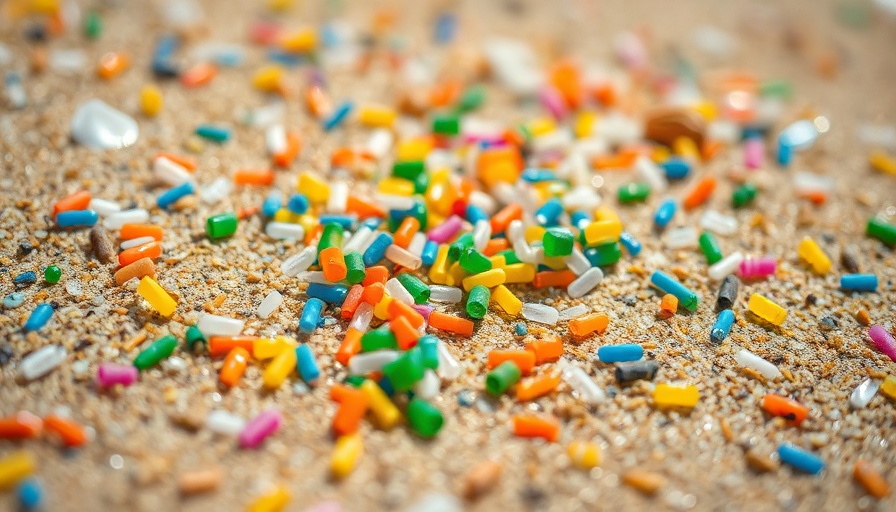
Microplastics and Their Presence in Our Lives
As we navigate our daily routines, it's hard to ignore the pervasive influence of plastic. From food packaging to household items, single-use plastics have become ingrained in modern life. Yet, with mounting evidence of their environmental impact, the question remains: how do these materials affect our health?
Understanding Microplastics: What Are They?
Defined by the National Oceanic and Atmospheric Administration, microplastics (MPs) are particles less than five millimeters long. They originate from both primary sources, such as microbeads in cosmetics, and secondary sources, which are larger plastic items that break down into smaller pieces over time. This breakdown occurs due to a combination of environmental factors including sun, saltwater, and mechanical abrasion.
The Journey of Microplastics Into Our Bodies
Research indicates that humans are increasingly at risk of microplastic ingestion. MPs have been found in various food sources, including seafood, salt, and even drinking water. As the ocean absorbs plastics, these particles can accumulate in marine life. Eating seafood that has absorbed microplastics raises alarms about potential health risks for consumers.
Health Implications: What We Currently Know
While the long-term effects of microplastics on human health remain under investigation, studies have shown that microplastics can release harmful chemicals. Some MPs can act as carriers for other harmful substances, potentially exposing humans to toxic compounds. Understanding how these particles might interact with our biology is critical for public health officials and scientists alike.
Societal Impact: Cultural Reckoning with Plastic Use
The plastic crisis does not only affect marine life; it also reflects our collective consumer habits. Despite knowing the harmful effects, many still struggle to eliminate single-use plastics from their lives. Changing this narrative requires a combination of personal responsibility and systemic change.
Encouraging Sustainable Practices
The tide is turning towards sustainability, with many advocating for a reduction in plastic use. Alternatives, such as biodegradable materials and reusable containers, are gaining popularity. Communities across the globe are hosting cleanup events, raising awareness, and pushing for legislation to limit plastic production and waste.
Steps for Home and Business Owners to Combat Plastic Pollution
Making a significant shift towards eco-friendliness can feel daunting, but even small changes can lead to a larger impact. Business owners can consider implementing policies against single-use plastics, while homeowners can educate themselves on responsible waste management practices. Embracing no-plastic alternatives is not only beneficial for health but also essential for the planet.
Future Trends: Where Are We Headed?
Looking ahead, the future of plastics will hinge on innovation in material science. Companies are exploring alternatives that could protect the environment while still serving everyday needs. As we become more reliant on technology to provide solutions, the hope is that our consumption patterns will shift towards sustainable practices.
Conclusion: What You Can Do Today
As you consider the implications of microplastics on human health, take action by reducing your use of plastic. Engage with community programs that focus on sustainability, and advocate for responsible legislation. Change starts with individual choices and collective action. Together, we can contribute to a healthier environment and safeguard our health against plastic pollution.
 Add Row
Add Row  Add
Add 






Write A Comment